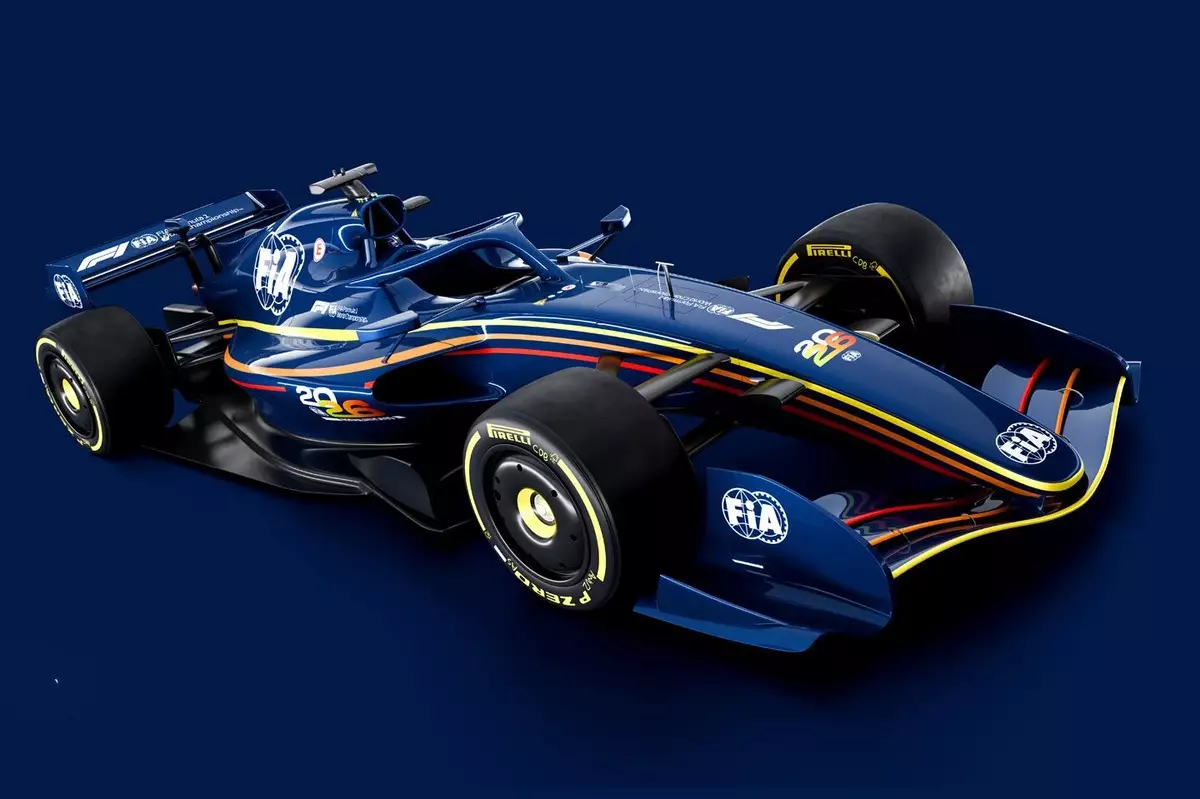Formula 1 stands on the precipice of a transformative era, with the 2026 regulatory overhaul promising to redefine the sport’s landscape. This isn’t merely a routine tweak but a fundamental shift aimed at balancing technological innovation with even more engaging racing. While some purists fixate on lap times as a metric of success, the reality is that F1 is evolving into a discipline where the thrill of close competition increasingly takes precedence over raw speed. The new regulations, emphasizing energy management and aerodynamic changes, signal a strategic move toward sustainability and amplified driver skill, which can ultimately make races more unpredictable and exciting.
This transition is motivated by a desire to make the sport more sustainable while reinvigorating its competitive spirit. The move away from traditional downforce-intensive cars to models that generate less aerodynamic grip essentially levels the playing field, giving midfield teams a better chance to compete against the giants. The new design philosophy prioritizes energy efficiency and strategic deployment of power — elements that align well with modern technological and environmental standards. The focus on driver skill over outright speed introduces an element of chess rather than a mere sprint, demanding greater tactical acumen and mental resilience from drivers.
A Shift in Perception: Lap Times Are Not the Endgame
Some may see a slowdown or altered lap times as a setback for the sport’s excitement, but that perspective misses the larger purpose. According to FIA officials, the focus should be on the race itself — overtakes, strategic battles, and the unpredictability that keeps fans engaged. The importance of lap times as a sole indicator of competitiveness is being deliberately diminished. Once the initial shock of different speeds subsides, spectators will recognize that thrilling wheel-to-wheel combat and tactical maneuvers are ultimately what define an exhilarating race.
It is reassuring, yet ambitious, to hear that the FIA expects these cars to be only slightly slower overall, with continuous evolution expected to close the gap eventually. This indicates that the sport is not abandoning speed; instead, it is reshaping how speed manifests on the track, favoring tactical brilliance over sheer raw pace. This redefinition emphasizes that racing is more than a stopwatch — it’s about making every moment on the circuit count.
The Future of Lap Times and Technical Uncertainty
Estimations suggest that the 2026 cars will be between one and two-and-a-half seconds slower initially, but this gap is likely temporary. The technological arms race will persist, with teams refining aerodynamics, power units, and strategies. The lack of concrete data from all teams introduces some uncertainty, but it also underscores the adaptive nature of F1’s development cycle. The sport’s governing body is aware that initial simulations might not capture every nuance, and performance disparities are expected in the early phases. However, the overarching goal remains clear: to foster a more strategic, skill-based type of racing that can captivate fans as much as, if not more than, pure speed.
This negotiating of technological uncertainties reflects a broader lesson: racing is fluid, constantly evolving, and driven by human ingenuity. The focus on continuous development means that any slowdown at the start is merely a stepping stone toward a more balanced and competitive future.
Eliminating DRS: A Bold Step Toward Authentic Racing
One of the most striking changes accompanying the 2026 regulations is the removal of DRS (Drag Reduction System), long a staple of overtaking. Instead, the sport introduces active aerodynamics with adjustable modes, like X-mode and Z-mode, which allow drivers to optimize their car’s performance through technological enhancements that mimic a “permanent DRS.” This shift aims to deepen the strategic layer, making overtakes more challenging and rewarding when executed.
The Manual Override Mode, akin to an “overdrive” in racing, is designed not just as a shortcut but as a tactical tool. Its power and deployment will be finely tuned to ensure overtaking remains a challenge—difficult yet achievable. This is an intentional move to prevent races from becoming predictable or overly simplified, encouraging drivers to master the complexities of the car’s advanced systems and, by extension, their own driving skills.
This technological evolution challenges fans’ perceptions as well. Instead of immediate, overt DRS jumps, overtaking will depend more on timing, consistency, and strategic skill. It’s a bold approach that prioritizes racing psychology and technical mastery over quick fixes, promising a more genuine spectacle where overtakes are earned rather than handed out.
Redefining the Essence of Excitement in F1
Ultimately, these regulatory adjustments reflect a conscious effort to elevate the core appeal of Formula 1: close, unpredictable racing. The sport’s leaders seem keenly aware that modern audiences crave more than just fast laps; they want battles, comebacks, and moments of brilliance under pressure. By shifting focus away from lap times and toward strategic depth and driver ingenuity, F1 is positioning itself as a sport rooted in authentic competition and technological sophistication.
In this reimagining of motorsport, speed remains vital, but it is no longer the sole measure of success. Instead, nuanced tactics, car handling, and the mental agility of drivers will determine the outcome. The move away from traditional aerodynamic dependence to more complex, energy-conscious designs is a recognition that racing excellence is multidimensional. It challenges spectators and teams alike to embrace the new era, where unpredictability, skill, and innovation will define the sport’s future narrative.
This evolution may initially face skepticism, especially regarding how fans interpret the new cars’ slower pace, but history shows that sports flourish when they adapt, reinvent, and push boundaries. F1’s upcoming era might be its most thoughtfully engineered yet — a testament to its resilience and a promise of more compelling racing for years to come.

